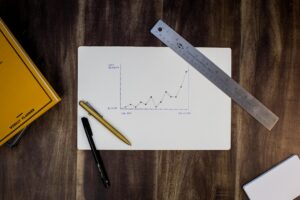Backtesting Your Forex Trading Strategy: The Key to Finding What Works
Forex trading is not a game of luck or guesswork; it requires a well-defined strategy and disciplined execution. Developing a profitable trading strategy is crucial for success in the forex market. But how can you be confident that your strategy will work in different market conditions? This is where backtesting comes into play.
What is Backtesting?
Backtesting is the process of evaluating a trading strategy using historical data to simulate how it would have performed in the past. By applying your strategy to historical price data, you can analyze its performance, identify strengths and weaknesses, and make necessary adjustments before risking real capital in the live markets.
Why is Backtesting Important?
Backtesting is a crucial step in the development and validation of any trading strategy. Here are some reasons why backtesting is so important:
1. Evaluating Strategy Performance: Backtesting allows you to objectively evaluate the performance of your trading strategy. By analyzing historical trades, you can determine if your strategy is profitable, how much it can potentially make, and what drawdowns or losses it may experience.
2. Identifying Strengths and Weaknesses: Backtesting helps you identify the strengths and weaknesses of your strategy. It allows you to see which market conditions your strategy performs well in and where it struggles. This information is vital for refining and optimizing your strategy.
3. Building Confidence: Backtesting builds confidence in your trading strategy. By seeing positive results in historical data, you gain trust in your strategy and are more likely to stick with it during live trading, even during drawdown periods.
4. Risk Management: Backtesting allows you to assess the risk associated with your strategy. By analyzing historical drawdowns, you can determine the maximum potential loss and adjust your risk management accordingly.
How to Backtest Your Forex Trading Strategy?
To effectively backtest your forex trading strategy, follow these steps:
1. Define your Strategy: Clearly define your trading strategy, including entry and exit rules, risk management parameters, and any other relevant factors. This step is crucial as it sets the foundation for your backtesting process.
2. Gather Historical Data: Obtain high-quality historical price data for the currency pairs you intend to trade. Ensure that the data is reliable and representative of the market conditions you will encounter.
3. Choose a Backtesting Platform: Select a reliable backtesting platform or software that suits your needs. There are several options available, ranging from free to paid platforms. Ensure the platform provides accurate simulation capabilities and allows you to backtest your strategy against multiple currency pairs.
4. Set Parameters and Run Backtests: Input your strategy parameters into the backtesting software and run the simulations. Pay attention to factors such as transaction costs, slippage, and spread to accurately reflect real market conditions.
5. Analyze Results: Once the backtests are complete, analyze the results. Evaluate the profitability, drawdowns, and other performance metrics of your strategy. Identify patterns in winning trades and losing trades to refine your strategy further.
6. Optimize and Refine: Based on the analysis of your backtest results, make necessary adjustments to optimize and refine your strategy. This may include modifying entry/exit rules, adjusting risk management parameters, or incorporating additional indicators.
7. Repeat the Process: Backtesting is an ongoing process. As market conditions change, it is essential to periodically retest your strategy to ensure its continued effectiveness.
Tips for Effective Backtesting:
– Use a sufficient amount of historical data to ensure statistical significance.
– Consider different market conditions and timeframes during backtesting.
– Account for slippage and other transaction costs to accurately reflect real trading conditions.
– Avoid over-optimization by being cautious of curve-fitting. Ensure your strategy is robust and not tailored too specifically to historical data.
– Keep a record of your backtesting results and compare them to live trading performance to validate your strategy’s effectiveness.
Conclusion:
Backtesting is an essential tool for forex traders to evaluate and refine their trading strategies. By simulating historical trades, traders can gain insights into the profitability, strengths, and weaknesses of their strategies. It provides the necessary confidence to execute trades in live markets while minimizing potential risks. Remember, successful trading requires continuous testing, optimization, and adaptation. So, take the time to backtest your forex trading strategy and find what works for you.






